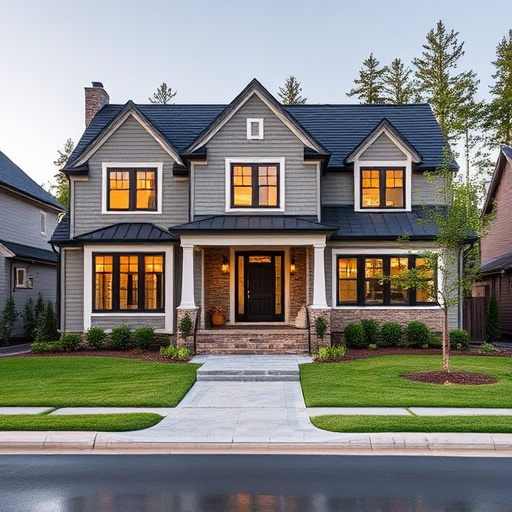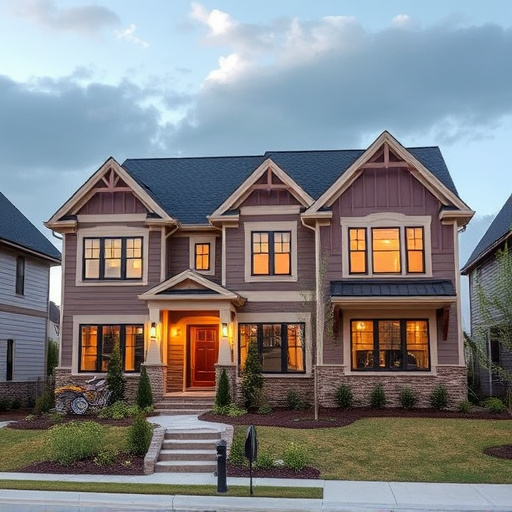Residential builders achieve successful project management by coordinating with subcontractors, leveraging their specialized skills in electrical, plumbing, carpentry, and interior painting. Effective communication through regular meetings, collaborative tools, and clear documentation ensures all parties understand project goals, timelines, and tasks. Robust systems for task allocation, digital planning tools, and open lines of communication minimize delays, manage expectations, and ultimately foster client satisfaction in projects like kitchen remodels and customized home renovations.
For any successful residential builder, coordinating with subcontractors is key to project completion. This guide offers invaluable tips on understanding subcontractors’ roles and responsibilities, implementing effective communication strategies, and streamlining project management for seamless collaborations. By mastering these practices, residential builders can ensure timely delivery, maintain high quality standards, and achieve client satisfaction.
- Understanding Subcontractor Roles and Responsibilities
- Effective Communication Strategies for Clear Coordination
- Streamlining Project Management for Efficient Collaborations
Understanding Subcontractor Roles and Responsibilities

For any residential builder, coordinating with subcontractors is a key aspect of successful project management. Understanding each subcontractor’s roles and responsibilities is essential to ensure smooth operations and on-time completion of projects. Subcontractors are specialists in their respective fields, ranging from electricians and plumbers to carpenters and interior painters. Each brings unique skills and expertise that contribute to the overall functionality and aesthetics of a home transformation.
Knowing their tasks helps residential builders assign clear expectations and timelines. For instance, while a carpenter focuses on structural elements and crafting functional spaces, an electrician deals with wiring and lighting, ensuring safety and efficiency. Similarly, interior painting subcontractors add color and style, enhancing the home’s ambiance. Effective communication and clarity in roles foster collaboration, minimizing delays and disputes, and ultimately leading to satisfied clients.
Effective Communication Strategies for Clear Coordination

Effective communication is the cornerstone of successful coordination between residential builders and subcontractors. A clear, consistent, and open dialogue ensures everyone involved understands project goals, timelines, and specific tasks. This includes regular meetings to discuss progress, address any issues, and make necessary adjustments promptly. Using collaborative tools like project management software can streamline communication, keeping everyone on the same page.
For instance, when embarking on a bathroom renovation or interior painting project as part of a larger residential builder’s portfolio, clear coordination involves detailing scope of work, material specifications, and expected completion dates. This ensures subcontractors align with the builder’s vision for the space, whether it’s a luxurious bathroom remodel or fresh interior painting that complements the home’s overall aesthetic.
Streamlining Project Management for Efficient Collaborations

In the realm of residential building, efficient project management is key to successful collaborations with subcontractors. Streamlining this process ensures that everyone involved works in harmony, leading to timely project completion and high-quality results. For residential builders, implementing a robust system for task allocation, communication, and progress tracking can significantly enhance productivity. This includes utilizing digital tools for project planning, where all stakeholders have access to real-time updates, allowing for quick adjustments to schedules as needed.
Effective collaboration between the builder and subcontractors is pivotal in projects like kitchen remodels or customized home renovations. By fostering open lines of communication, builders can ensure that each subcontractor understands their specific roles and responsibilities. Regular meetings and clear documentation help in managing expectations, minimizing delays, and promoting a seamless workflow. This coordinated approach not only benefits the builder but also ensures client satisfaction through consistent quality and timely delivery of renovation services.
For any successful residential builder, effectively coordinating with subcontractors is key to delivering high-quality projects on time and within budget. By understanding each party’s roles and responsibilities, implementing clear communication strategies, and adopting efficient project management practices, builders can foster seamless collaborations that result in exceptional construction outcomes. These tips are essential tools in a residential builder’s toolkit for navigating complex construction projects.














